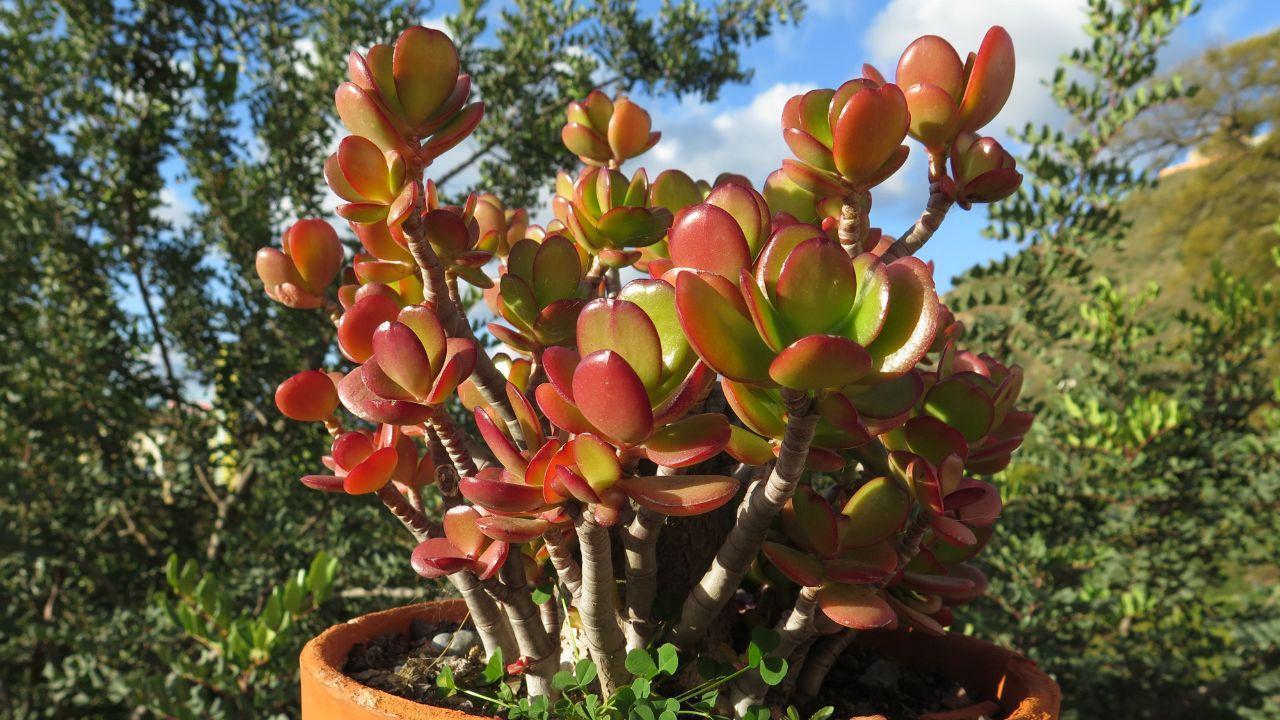
Post by: Luxmi Verma
The Jade Plant (Crassula ovata) is more than just a beautiful addition to many homes and offices; it’s a plant rich in cultural meanings and fascinating myths. Known for its rounded, shiny leaves and its ability to thrive in various conditions, the Jade Plant has captured the imagination of many. But beyond its appearance, there are several myths tied to this plant—some of which have been passed down through generations. In this article, we will explore these myths and uncover the science behind them, helping you separate fact from fiction.
The Jade Plant is often referred to as the "money tree" or "friendship tree" in various cultures. This is due to its symbolic importance. In many Asian cultures, especially in China, the plant is believed to bring good luck, wealth, and prosperity. People often place the Jade Plant in their homes or businesses, believing that it will attract positive energy and financial success. This belief stems from the plant’s round, coin-like leaves, which are thought to represent money.
In other cultures, the Jade Plant is seen as a symbol of friendship. The plant is often given as a gift to friends or loved ones, as it is believed to bring good fortune and strengthen relationships. The idea behind this is that the plant’s longevity and resilience mirror the strength and lasting nature of true friendships.
The Jade Plant is surrounded by a variety of myths and superstitions, just like many other plants. Let's explore a few of the most well-liked ones in more detail:
One of the most popular myths surrounding the Jade Plant is that it can bring instant wealth. People think that putting this plant in their house or place of business will bring success and wealth. Although the plant has symbolic associations with wealth, it's crucial to keep in mind that no plant will magically improve your financial circumstances. Nonetheless, maintaining the health and well-being of the jade plant may promote a growth-oriented and progressive mindset that can be advantageous in both personal and professional spheres.
The idea that the jade plant is unbreakable is another myth. It absorbs carbon dioxide and releases oxygen, which can improve the overall air quality. Additionally, the plant may help reduce levels of certain indoor pollutants, making it a natural air purifier. While the effect may be subtle, having a Jade Plant in your home can contribute to a healthier living space.
Some people think that only certain climates, such deserts or tropical areas, are suitable for the jade plant's growth. Although the jade plant is indigenous to southern Africa and thrives in warm, dry regions, it can be cultivated anywhere as long as it receives adequate sunlight and isn't overwatered. In actuality, the jade plant is a popular houseplant for people in a variety of regions and is frequently found in homes and workplaces worldwide.
Another myth that has circulated is that the Jade Plant has healing properties and can cure various illnesses. Some cultures believe that placing the plant near the sick person’s bed or in their home can speed up recovery. While it’s true that plants like the Jade Plant can improve air quality and create a calming environment, it is important to note that there is no scientific evidence to support the idea that the plant can cure diseases. It's always preferable to speak with a healthcare provider if you're sick.
Now that we’ve explored some of the common myths, let’s take a look at the real science behind the Jade Plant. Despite its mystical reputation, there is plenty of factual information to appreciate about this hardy plant.
The Jade Plant is classified as a succulent, meaning it stores water in its thick, fleshy leaves. This allows the plant to survive in environments with limited water. In the wild, succulents like the Jade Plant often grow in arid conditions, and their ability to store water helps them endure long periods of drought. This is why the Jade Plant is so easy to care for—it doesn’t require frequent watering and can go weeks without needing a drink.
Like many houseplants, the Jade Plant can help purify the air in your home. It absorbs carbon dioxide and releases oxygen, which can improve the overall air quality. Additionally, the plant may help reduce levels of certain indoor pollutants, making it a natural air purifier. While the effect may be subtle, having a Jade Plant in your home can contribute to a healthier living space.
The jade plant's amazing lifespan is one of the factors that contribute to its associated with longevity. A Jade Plant can live for decades, even up to 100 years! Its ability to survive for such a long time is one of the reasons it is considered a symbol of resilience and strength in many cultures. Its lifespan serves as a reminder of how important patience and attention to detail are in every aspect of life.
Here are some easy ways to maintain the health of your jade plant:
Light: The plant should be placed where it will receive a lot of indirect sunlight. Although it can withstand low light, it likes bright, sunny areas.
Watering: When the soil is dry, water the plant. Overwatering can cause root rot, so be cautious.
Soil: Use well-draining soil to prevent water from accumulating at the bottom of the pot.
Repotting: Repot your Jade Plant every few years to ensure it has enough space to grow.
The article "Jade Plant Myths in Culture and the Science Behind Them" explores the cultural beliefs and common myths about the Jade Plant, such as its ability to bring wealth or its indestructibility. It debunks these misconceptions and highlights the plant’s real benefits, like purifying the air and symbolizing resilience. The article also provides practical tips for caring for this low-maintenance, long-living succulent.
The views and opinions expressed in this article are based on research and cultural beliefs surrounding the Jade Plant. While the article aims to provide accurate and helpful information, it should not be considered as professional advice or a guarantee of results. Readers are encouraged to consult expert sources or professionals for specific plant care and health-related concerns. This content is for informational purposes only and does not claim to diagnose, treat, or cure any ailments or issues related to plant care.
Published by DXB News Network
#trending #latest #JadePlantMyths #CulturalSignificance #PlantCare #SucculentCare #GoodLuckPlant #JadePlantScience #MoneyTree #IndoorPlants #HomeGardening #PlantMyths #JadePlantCare #Houseplants #WealthAndProsperity #LongevityInPlants #SucculentLove #AirPurifyingPlants #breakingnews #worldnews #headlines #topstories #globalUpdate #dxbnewsnetwork #dxbnews #dxbdnn #dxbnewsnetworkdnn #bestnewschanneldubai #bestnewschannelUAE #bestnewschannelabudhabi #bestnewschannelajman #bestnewschannelofdubai #popularnewschanneldubai

PM Modi will visit Jeddah to meet Crown Prince MBS. Talks will cover strong ties, strategy, and new MoUs. This is his first visit in his third term....Read More.

Sultan Haitham will visit Russia for two days from Monday to strengthen Oman-Russia ties and discuss cooperation and key international and regional issues...Read More.














Humanoid Robots Race with Humans at Half-Marathon in China
21 humanoid robots raced alongside runners in the Yizhuang half-marathon, showcasing robotic enginee

Woman Brain-Dead After Paris Cryotherapy Accident
A woman is brain-dead after a fatal cryotherapy accident in Paris that also claimed a gym worker’s l

A Chinar Leaf in the Desert: Zubair Kirmani and the Journey of Kashmir at World Art Dubai
A Chinar Leaf in the Desert: Zubair Kirmani and the Journey of Kashmir at World Art Dubai

Carla Gía Brings the Language of Duality to World Art Dubai 2025
Carla Gía Brings the Language of Duality to World Art Dubai 2025

Not Just a Painting, It’s a Pulse: Deena Radhi at World Art Dubai 2025
Not Just a Painting, It’s a Pulse: Deena Radhi at World Art Dubai 2025